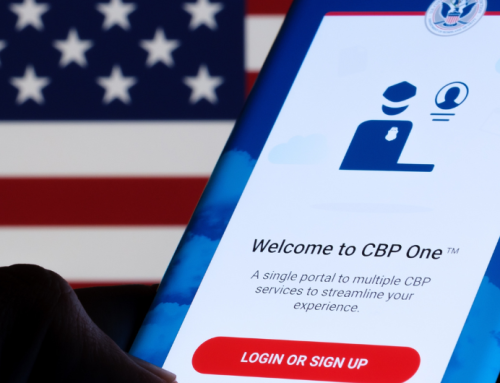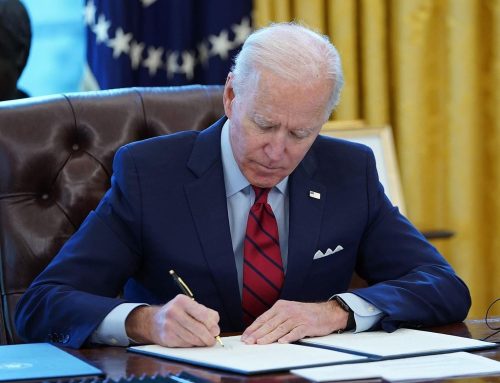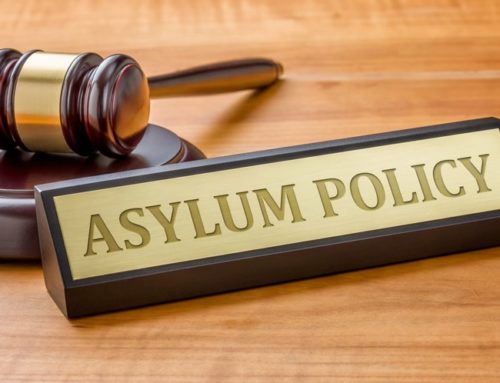MAINTAINING LPR STATUS (GREEN-CARD) AND QUALIFYING FOR CITIZENSHIP
Overview
A Lawful Permanent Resident (LPR) is a person who is not a citizen of the United States, but who resides the in the United States under legally recognized and lawfully recorded permanent residence as an immigrant. A person with an LPR status is also known as Permanent Resident Alien, Resident Alien Permit Holder, and Green Card Holder. Your LPR status generally begins on the day when your green card is issued. The date you became a permanent resident is also written on your green card. Under certain circumstances a person can lose his/her LPR status. Furthermore, a mere maintenance of your LPR status may not qualify you for naturalization.
Maintaining LPR Status
You may lose your permanent resident status (green card) if you commit certain crimes that make you removable from the United States under Section 237 and Section 212 of the Immigration and Nationality Act (INA). If you commit such an act, you may be brought before an immigration court to determine your right to remain a permanent resident.
You may also lose your green card if you are found to have abandoned your Permanent Resident Status. This can happen if you:
- Move to another country intending to live there permanently;
- Remain outside of the United States for more than 6 months without providing evidence of close ties demonstrating an uninterrupted intent of permanently residing in the United States;
- Remain outside of the United States for more than 1 year without obtaining a reentry permit or returning resident visa;
- Remain outside of the United States for more than 2 years after issuance of a reentry permit without obtaining a returning resident visa;
- Fail to file income tax returns while living outside of the United States for any period;
- Declare yourself a “nonimmigrant” on your tax returns.
Generally, every travel outside of the US triggers questions about the green-card holder’s foreign residence. There is a common misperception that, as long as you visit the US every 6 months, you will be able to maintain your permanent residence. This is not true. First, many don’t realize that absences from US is just one of the factors which the Customs and Border Patrol (CBP) officers must consider in determining the LPR’s residence. For example, even if you return from a 10-day trip to your home country, the CBP officer will most likely question the purpose of your visit. And if, based on your answers, the CBP officer believes that you have residence in another country but keep your green-card just for visits to the US, then that officer may conclude that you abandoned your permanent residence in the US.
Furthermore, frequent absences of even less than 180 days may still cause abandonment. But, if you have been absent from the US for more than 180 days during a single trip, the CBP officers are instructed to presume that you had abandoned your permanent resident status. In such a case, the CBP officer should make reasonable inquiries and, if the officer is not convinced that, despite your lengthy absence, you maintained your intent to permanently reside in the US, then the officer may seize your green-card and give you summons to appear in court. Contrary to popular belief, CBP officers may not restrict your entry into the US due to alleged abandonment of your permanent residence. This is true even if you spent years outside of the US. CBP officers can only summon you to appear in immigration court to prove that you did not abandon your residence in the US. But the officer must till let you into the country. Only an immigration judge may take away your green-card.
Absence from the United States
A lawful permanent resident (LPR) normally may travel outside the United States and return; however, there are some limitations. If you spend over 6 months outside of the US during a single trip, you will be presumed to have abandoned your permanent resident status. To overcome this presumption, you may show the CBP officer copies of documents evidencing your close ties to the US. This includes, your US tax returns, bank statements, evidence of property ownership, evidence of family ties and business ties, mail addressed to your US address, US driver’s license, credit cards, and any other evidence may prove you have maintained close ties to the United States. We usually recommend to every green-card holder to collect such evidence into a file and carry in carry-on during every trip abroad. Some trips last longer than 6 months for unexpected reasons. In such cases, it is also important to gather and carry evidence of such unexpected delays.
You need a reentry permit if you plan to be outside the United States for more than 1 year. However, in determining whether you abandoned your status, any length of absence from the United States may be considered, even if less than 1 year. For example, even if you were absent from the United States just for a couple of months, you can still be questioned at the port of entry when you attempt to return to the United States, and, if the officer concludes that you have abandoned your LPR status, your green card may be taken away from you. In order to avoid this, whenever you travel as an LPR, you should carry documents with you that confirm your ties and residency in the United States.
Re-Entry Permit
If you intend to be outside of the United States for one year or more, you need to obtain a reentry permit in order to be able to return to the United States. Otherwise, you will face two types of problems:
- Your Permanent Resident Card becomes invalid for reentry into the United States if you are absent from the United States for 1 year or more;
- Your U.S. permanent residence may be considered abandoned for absences shorter than 1 year if you take up residence in another country.
A reentry permit establishes that you did not and do not intend to abandon your LPR status, and it allows you to apply for admission to the United States after traveling abroad for up to 2 years without having to obtain a returning resident visa. Reentry permits are normally valid for 2 years from the date of issuance. If you remain outside of the United States for more than 2 years after issuance of a reentry permit, you will need to obtain a returning resident visa. If you fail to do so, your LPR status may be considered abandoned, and you may not be able to enter the United States after your reentry permit expires. You must be physically present in the US to apply for re-entry permit. You must also be physically present in the US for fingerprinting. Generally, fingerprinting appointment is scheduled 3-4 weeks after applying for re-entry permit. So, you can file for re-entry permit, leave the US and return in a month or so for fingerprinting. You may also request the fingerprinting to be rescheduled. USCIS liberally allows rescheduling fingerprinting appointments at least 1-2 times.
Qualifying for Citizenship
In order to qualify for U.S. citizenship through naturalization after having been an LPR for 5 years (in some cases 3 years), you need to fulfill two requirements:
- Continuous Residence in the United States;
- Physical Presence in the United States.
Continuous Residence
In order to satisfy the continuous residence requirement, applicants for naturalization are required to show that they have:
- Resided continuously in the U.S. for five years before applying; or
- Resided continuously in the U.S. for three years in the case of qualified spouses of U.S. citizens.
“Continuous residence” means that you have maintained residence within the United States for the required period of 5 or 3 years. While occasional travel outside the United States is permitted, extended absences of over 6 months may disrupt your continuous residence and make you ineligible for naturalization in the United States.
If you were absent in the United States for more than six months but less than one year, you have to prove that you did not abandon you permanent resident status by presenting documents confirming your continuous ties to the United States during the time of absence.
An absence from the United States for one year or more disrupts your continuous residence unless you obtain necessary paperwork in advance in order to preserve your residence for naturalization purposes (see below).
Note: Generally, an absence of more than 1 year while holding a reentry permit interrupts your continuous residence for citizenship purposes. However, it should be noted that event if absence on reentry permit lasts 2 years, the clock for calculating the continuous residence restarts from the conclusion of the first year of absence on reentry permit. In other words, any period of absence beyond the first year, while holding a reentry permit, is counted towards the continuous residence requirement for naturalization purposes.
Physical Presence
Even if you meet the continuous residency requirement (meaning that you have not been absent from the United States for longer than a year at a time), you may still not qualify for U.S. citizenship if you do not meet the physical presence requirement, meaning that you have spent more than half of the time after you became an LPR outside of the United States during all of your trips combined (for example, if you traveled back and forth between the United States and your country of birth).
In order to satisfy the physical presence requirement, applicants for naturalization are required to show that they were:
- Physically present in the U.S. for 30 months (2.5 years) within the 5-year period before applying; or
- Physically present in the U.S. for 18 months (1.5 years) within the 3-year period before applying in the case of qualified spouses of U.S. citizens.
In order to determine whether you meet this requirement, you need to add together the duration of all your trips outside the United States (including visits to Canada and Mexico) since you have become an LPR. You have to count every trip that lasted 24 hours or longer. If you do not meet this requirement, you may need to wait (while living in the United States) until the time you have spent in the United States adds up to 2.5 years within a 5-year period before you can apply for naturalization.
Additionally, you have to show that you have resided for at least three months before applying for naturalization in the USCIS district where you claim to have residency.
Preserving Residence for Naturalization Purposes
If you need to live outside of United States for more than one year for work in specific jobs in the U.S. government, private sector, qualifying scientific, religious, or international organizations, you may file Form N-470, Application to Preserve Residence for Naturalization Purposes. An approved Form N-470 allows you to preserve your residency, previously accumulated for naturalization purposes, even if you reside outside the United States for longer than a year. Such permanent residents have to file Form N-470 before departing the United States, with the exception of religious workers, who can apply before or after departure or even after return to the United States. You do not have to be in the United States to file Form N-470, but you have to file it before you have been absent for a continuous period of one year. Please note that in most cases you have to be physically present and residing in the United States for at least one year without any absences after becoming an LPR before you can apply to preserve your residency.
Regardless of when you file Form N-470, you still have to apply for reentry permits before you leave and meet the physical presence requirement for naturalization as appropriate. If you obtain a reentry permit and an approved Form N-470, you can stay outside of the United States for two years without losing your LPR status. This absence will interrupt your continuous residence for only one year, even though you were absent for two years, because the second year counts toward the residency requirement according to the Form N-470 rules.
Attorneys at I.S. Law Firm have helped many permanent residents, including those who spent significant amounts of time outside the United States after receiving their green cards, maintain their permanent residency and become U.S. citizens. For more information about our services and for consultation please contact us at +1-703-527-1779 or via e-mail: [email protected]





